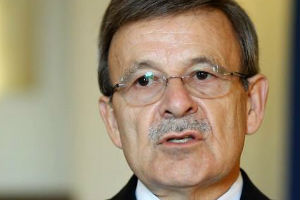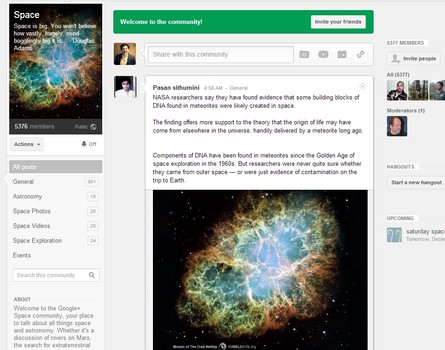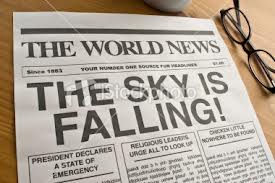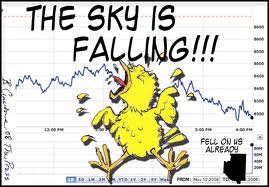It is the end of the year and for many non-profit organizations it means:
- constructing an agency budget for 2013, and
- putting together a comprehensive resource development plan to add meaning and depth to the revenue side of the agency budget.
In the last few weeks as I’ve talked with various agencies about their resource development planning efforts, I’m reminded of age-old battle:
Fundraising vs. Grantwriting
Donors see government grants as “wealth redistribution” and a substitute for their charitable contributions. Fundraising volunteers (and even fundraising staff) get squeamish about asking other people for money, and they prefer asking government and private sector foundations over soliciting family, friends, co-workers and neighbors.
 This phenomenon is called the “crowding out effect” and I wrote about it in the following blog posts in 2011:
This phenomenon is called the “crowding out effect” and I wrote about it in the following blog posts in 2011:
- Does Government Funding Destroy Philanthropy?
- Don’t Blame the Donor for the “Crowding Out Effect” of Government Funding
While I would love for you to go back and read those posts, I also encourage you to read an awesome 2009 research paper written by James Andreoni and A. Abigail Payne titled “Is Crowding Out Due Entirely to Fundraising? Evidence from a Panel of Charities“. They do an awesome job of looking at this from a data perspective, and they conclude the following:
Using instrumental variable techniques, we estimate total crowding is around 73 percent, and that this crowding out is almost exclusively is the result of reduced fund-raising. A $10,000 grant, for instance, reduces fund-raising expenses by $1370, which in turn reduces donations by $7271. Adding this $1370 savings in fund-raising expenses reduces the estimate of crowding out to 59 percent. If charities had maintained their fund-raising efforts, our estimates show that donations would have risen by the full amount of the grant.
 The crowding out effect is real, and it is something non-profit organizations need to understand and deal with. If not, then I advise putting the following age-old expression in a frame above the boardroom door: “The road to hell is paved with good intentions.”
The crowding out effect is real, and it is something non-profit organizations need to understand and deal with. If not, then I advise putting the following age-old expression in a frame above the boardroom door: “The road to hell is paved with good intentions.”
I’ve been doing a lot of thinking lately about how to put the “crowding out effect” in check, and the following few paragraphs are just a few ideas. I think some are good thoughts and others are a little out there, but let’s work together on refining these ideas.
Planning – Planning – Planning
The planning process is not about the executive director putting stuff in writing and handing it over to volunteers for implementation. Planning is an engagement activity.
So, why not introduce volunteers who are involved in the resource development planning process to the research paper by James Andreoni and A. Abigail Payne and ask them: “What should we do about this? How should we accommodate for this in our plan?”
Simply stated . . . planning is the antidote for the crowding out effect.
 Fundraising policies
Fundraising policies
I’ve always seen “policies” as a way of creating hard and fast rules for things that board volunteers and non-profit staff might otherwise find hard to implement if it weren’t “required“. Since so many people find grantwriting easier and preferable to fundraising, I started wondering if there weren’t some policies we could create that could put the “crowding out effect” in check. The following are just a few thoughts:
- A written policy prohibiting government and private foundation grant revenue from exceeding a certain percentage of the agency’s overall revenue.
- A written policy that commits board members to increasing their personal contributions by a certain percentage whenever grant revenue exceeds a certain level.
- A written policy that commits board members to asking a certain number of new prospective donors whenever grant revenue exceeds a certain level.
- A written policy that ties the agency’s annual campaign goal to the level of grant revenue. (e.g. every 1% increase in revenue goals from grant writing results in a 2% increase in qualified individual giving prospects and corresponding campaign infrastructure)
Truth be told . . . I’m not a huge fan of this approach, but I do think it is worth continued discussion and dialog.
Board development
I suspect that the best solution is the simplest solution — recruit the right board members.
Smart business people will understand a simple concept like the “crowding out effect”. Put this challenge in front of them and ask them to solve it.
I suspect they will simply conclude that more “fundraising-minded volunteers” need to be recruited to off-set the effects of grantwriting on the agency. After all, isn’t that what they’d probably conclude when it comes to their sales force staff and their business if confronted with the same challenge?
Are you in the middle of writing your 2013 resource development plan? Are you facing some of the same challenges with volunteers regarding the question of more fundraising versus more grantwriting? If so, how are you tackling this challenge? Do you have any suggestions on how to improve upon the recommendations I’m providing in this blog post? Please use the comment box below to weigh-in with your thoughts and suggestions.
Here’s to your health!
Erik Anderson
Founder & President, The Healthy Non-Profit LLC
www.thehealthynonprofit.com
erik@thehealthynonprofit.com
http://twitter.com/#!/eanderson847
http://www.facebook.com/eanderson847
http://www.linkedin.com/in/erikanderson847

 I opened my eyes this morning just like I have done on the previous 41 Christmas Eves, and my mind started to race. My family does all of its getting-together and celebrating on December 24th, which of course means:
I opened my eyes this morning just like I have done on the previous 41 Christmas Eves, and my mind started to race. My family does all of its getting-together and celebrating on December 24th, which of course means: Your donors, staff, board members and volunteers
Your donors, staff, board members and volunteers A few housekeeping items
A few housekeeping items Welcome to O.D. Fridays at DonorDreams blog. Every Friday for the foreseeable future we will be looking more closely at a recent post from John Greco’s blog called “
Welcome to O.D. Fridays at DonorDreams blog. Every Friday for the foreseeable future we will be looking more closely at a recent post from John Greco’s blog called “ Yesterday morning Jimmie Alford died of an apparent heart attack at the age of 69. This sad news started circulating slowly as the day unfolded, and then it snowballed into an online viral event and my email inbox is full of people sharing the news, their grief, and their disbelief.
Yesterday morning Jimmie Alford died of an apparent heart attack at the age of 69. This sad news started circulating slowly as the day unfolded, and then it snowballed into an online viral event and my email inbox is full of people sharing the news, their grief, and their disbelief. It is that time of the year when retailers are pulling out every stop in their little bag of tricks to get your attention and hopefully your holiday dollars. One of those shiny objects that some retailers use is called cause related marketing (CRM). Wikipedia does a nice job of
It is that time of the year when retailers are pulling out every stop in their little bag of tricks to get your attention and hopefully your holiday dollars. One of those shiny objects that some retailers use is called cause related marketing (CRM). Wikipedia does a nice job of 



 Welcome to O.D. Fridays at DonorDreams blog. Every Friday for the foreseeable future we will be looking more closely at a recent post from John Greco’s blog called “
Welcome to O.D. Fridays at DonorDreams blog. Every Friday for the foreseeable future we will be looking more closely at a recent post from John Greco’s blog called “ In that five-minute period of time as I paced the back of the banquet hall, there was a moment where I stopped listening and worrying about LaShaunda and I focused on what was happening in the room:
In that five-minute period of time as I paced the back of the banquet hall, there was a moment where I stopped listening and worrying about LaShaunda and I focused on what was happening in the room: When I hear one donor say something once, I chalk it up to something interesting. When I hear two donors say the same thing, I usually think it is an interesting occurence. However, when three or more donors express the same sentiment, I sit up . . . take notice . . . and treat it like a potential trend.
When I hear one donor say something once, I chalk it up to something interesting. When I hear two donors say the same thing, I usually think it is an interesting occurence. However, when three or more donors express the same sentiment, I sit up . . . take notice . . . and treat it like a potential trend. While fear is irrational, it definitely impacts human behavior. I believe most students learn this in Psychology 101. So, if people “think” the sky is falling, it is falling regardless of the facts.
While fear is irrational, it definitely impacts human behavior. I believe most students learn this in Psychology 101. So, if people “think” the sky is falling, it is falling regardless of the facts. Here are a few quick tips you may want to remember when jumping into these discussions:
Here are a few quick tips you may want to remember when jumping into these discussions: This morning I am asking for your help with a small project I am working on. A few weeks ago I agreed to help one of my favorite non-profit organizations with a staff transition. Not only did their development director move on to greener pastures at the end of the summer, but their executive director also recently resigned. So, the board asked me to step into the void and help their management team with a variety of year-end miscellaneous projects (e.g. year-end holiday mailing, 2013 budget construction, resource development plan, etc).
This morning I am asking for your help with a small project I am working on. A few weeks ago I agreed to help one of my favorite non-profit organizations with a staff transition. Not only did their development director move on to greener pastures at the end of the summer, but their executive director also recently resigned. So, the board asked me to step into the void and help their management team with a variety of year-end miscellaneous projects (e.g. year-end holiday mailing, 2013 budget construction, resource development plan, etc). This question was inspired by a string of two or three grants in a row that this organization had just written. As a businessman, he asked this question because he is accustom to looking at everything through a “return on investment” (ROI) lens. In hindsight, this is what he saw:
This question was inspired by a string of two or three grants in a row that this organization had just written. As a businessman, he asked this question because he is accustom to looking at everything through a “return on investment” (ROI) lens. In hindsight, this is what he saw: Seriously, your feedback this morning will directly help another organization in its pursuit of developing fundraising best practices. Your participation will take all of a minute or two this morning. Please weigh-in. Your collective wisdom is massive and will bring tremendous value to this organization’s discussion. You can consider the few minutes that you invest in responding to this request as your “good turn” this holiday season. Please pay it forward!
Seriously, your feedback this morning will directly help another organization in its pursuit of developing fundraising best practices. Your participation will take all of a minute or two this morning. Please weigh-in. Your collective wisdom is massive and will bring tremendous value to this organization’s discussion. You can consider the few minutes that you invest in responding to this request as your “good turn” this holiday season. Please pay it forward! Welcome to O.D. Fridays at DonorDreams blog. Every Friday for the foreseeable future we will be looking more closely at a recent post from John Greco’s blog called “
Welcome to O.D. Fridays at DonorDreams blog. Every Friday for the foreseeable future we will be looking more closely at a recent post from John Greco’s blog called “ Moreover, whenever I see non-profit organizations and both staff and board leaders practicing this Taoist approach of “sitting still” and waiting for things to happen, I’ve often observed a train wreck shortly thereafter. However, I know that there are times when John is 100% right and this approach is warranted.
Moreover, whenever I see non-profit organizations and both staff and board leaders practicing this Taoist approach of “sitting still” and waiting for things to happen, I’ve often observed a train wreck shortly thereafter. However, I know that there are times when John is 100% right and this approach is warranted.